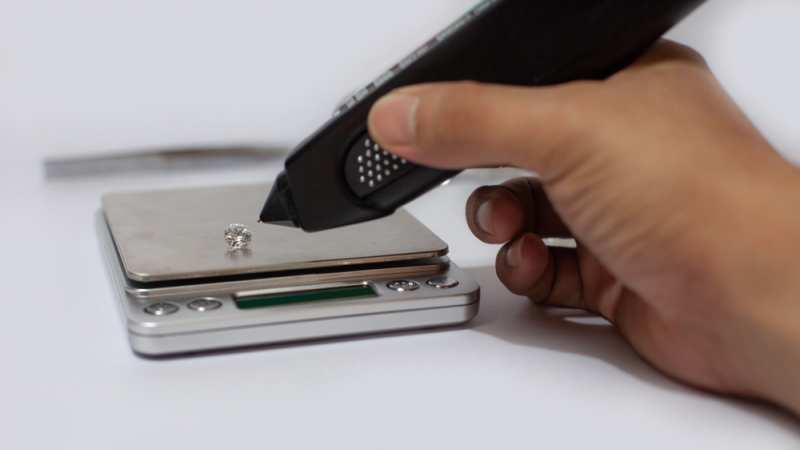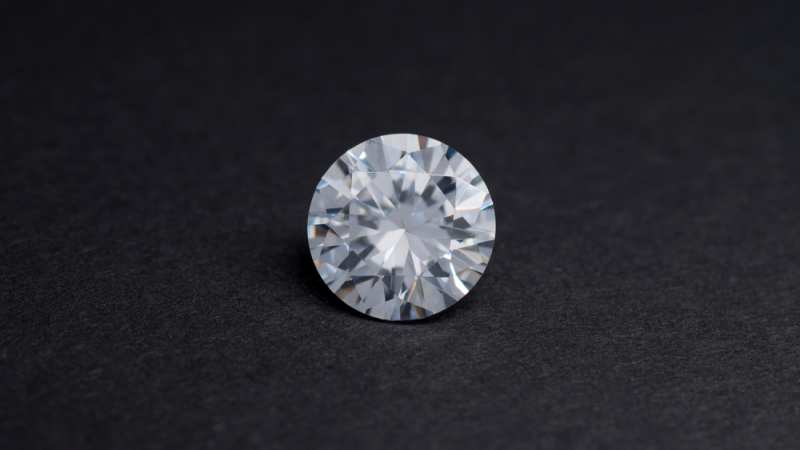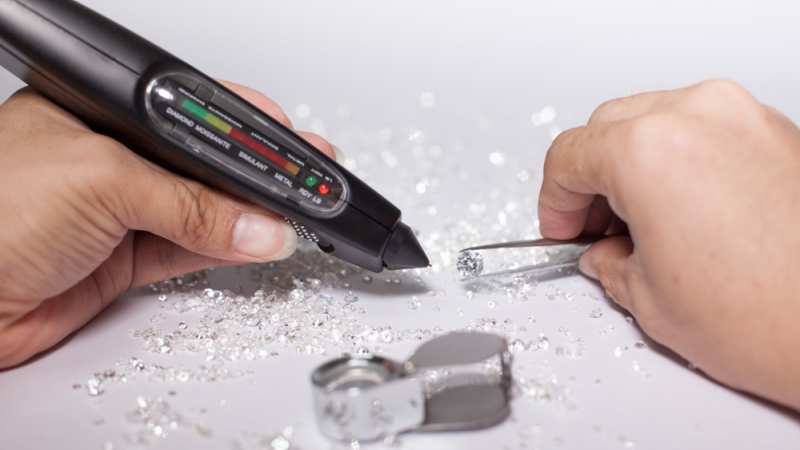Diamond testers serve as valuable tools for verifying the authenticity of a diamond, distinguishing between genuine diamonds and well-crafted imitations. Whether you are in the market to buy or sell a precious stone, you are likely to encounter these devices.
However, considering their pivotal role, you may wonder about the cost of a diamond tester. Typically, the price range for diamond testers falls between $20 and $200, varying depending on the quality of the model and any additional features it may offer.
Considering the peace of mind and assurance they provide in determining the authenticity of a diamond, this price range is reasonable for such a valuable tool.
Yet, the price isn’t the only aspect to consider when it comes to diamond testers. How do they work? Can they be relied upon? Are there alternative testing methods available?
Rest assured, this article will address these important questions. So, without further delay, let’s delve into the details and learn more about these diamond-testing gadgets!
DESIGN YOUR OWN ENGAGEMENT RING: START WITH A SETTING OR START WITH A DIAMOND. IT’S REALLY UP TO YOU!

What Are Diamond Testers?
Diamond testers are specifically designed to test diamonds, and their name aptly describes their purpose.
These portable gadgets are compact enough to fit in your pocket and feature a small tip that is placed on the surface of a stone for testing.
When a real diamond is detected, the tester will indicate this either through its display or with a sound signal.
So how do diamond testers work? They operate based on the principle that different gemstones conduct heat or electricity differently.
When the tip of a diamond tester is placed on a precious stone’s surface, heat is transferred through the stone. However, diamonds conduct heat differently than other stones like cubic zirconia. The tester detects the rate at which heat moves through the stone, allowing it to determine if it is a genuine diamond.
It’s worth noting that some diamond testers use electrical conductivity instead of thermal conductivity to test gemstones. The principle of operation is similar, but these testers rely on electricity rather than heat.
When it comes to reliability, diamond testers are generally considered to be accurate in determining a diamond’s authenticity. However, it’s important to mention that diamond testers relying on thermal conductivity may have difficulty distinguishing between moissanite and diamonds. This is because these two gemstones have similar heat-conducting properties. To overcome this, using a diamond tester that relies on electrical conductivity can help differentiate moissanite and diamonds more easily, as they have different electrical conductivity.
If you’re considering purchasing a diamond tester, there are a few factors to consider. It is recommended to choose a tester that combines both electrical and heat conductivity testing, as this will enable you to distinguish between moissanite, diamonds, and other gemstones. Some advanced diamond testers also include a metal detector feature to prevent false readings when accidentally touching the metal setting instead of the stone. While such features may increase the price, they are valuable in ensuring accurate results and avoiding costly mistakes.
Additionally, there are other beneficial features to consider when buying a diamond tester. These include a retractable tip to protect it from damage, quick heat-up time to maintain consistent testing temperature, and a choice between battery-powered or mains-powered options for portability and convenience. Opting for a user-friendly model that is easy to operate, with simple on/off switches and clear result notifications, is also advisable.
Investing in a reliable and feature-rich diamond tester is a wise choice, as it can save you from potentially purchasing or selling fake gemstones. With these considerations in mind, you can make an informed decision when selecting the right diamond tester for your needs.

When Are You Likely To Need A Diamond Tester
If you’re involved in purchasing, selling, repairing, or loaning diamond-embedded jewelry, it’s highly likely that you will encounter the need for a diamond tester. Here are three scenarios where having a diamond tester becomes relevant:
Selling or Loaning
When you intend to sell or loan a diamond, it’s standard practice for the diamond dealer or jeweler to use a diamond tester to verify the stone’s authenticity. This process ensures that the quality of the diamond is confirmed before any offers are made, which is a routine part of the jewelry industry.
Buying
If you’re in the market to purchase a diamond, it’s a good idea to request the seller or jeweler to test the diamonds you are considering right in front of you. This way, you can be confident that you are getting a genuine diamond rather than an aesthetically pleasing imitation.
Repairing
When you take your diamond jewelry for repairs, it’s common for the item to be out of your sight while the jewelers work on it in their workshop. To mitigate the risk of diamond switching or any potential issues, it’s advisable to request that the jeweler test the piece in front of you upon its completion. A reputable jeweler should be more than willing to accommodate this request as part of their professional service.
In addition to using diamond testers, there are simple home tests you can perform to determine if a stone is a genuine diamond or not. Here are a few examples:
Water Test
Fill a glass with water and carefully drop the gemstone into it. If the stone sinks, it indicates a real diamond. However, if it floats underneath or on the water’s surface, it is likely a fake. This test relies on the fact that natural diamonds have high density, causing them to sink.
Fog Test
Hold the gemstone between two fingers and breathe on it. If the fog disappears immediately, it is a real diamond. But if it takes a few seconds to dissipate, the stone is likely fake. This test evaluates the diamond’s ability to conduct heat and disperse it quickly.
Heat Test
Diamonds are known for their durability and resistance to heat. To perform this test, fill a glass with cold water, use fire-proof gloves or pliers to hold the gemstone, and heat it with a lighter for about 40 seconds before dropping it into the cold water. If the gemstone shatters, it is made of weaker components and not a natural diamond, which would show no reaction. This test assesses the strength and quality of the stone, as weaker materials like cubic zirconia or glass are prone to breaking under rapid temperature changes.
Refractivity and Reflectivity Tests
These tests examine a diamond’s ability to refract and reflect light, respectively. In the newspaper test or dot test, place the stone flat side down on a newspaper or draw a dot on a piece of paper. If you can clearly read the words or see the dot through the stone, it is likely fake. A genuine diamond refracts light in multiple directions, making it difficult to see through clearly.
To test reflectivity, hold the stone under a standard lamp and observe how the light is reflected off its surface. Genuine diamonds reflect white light exceptionally well, creating dazzling sparkle and colorful flashes known as fire. Comparing the sparkle and fire of a genuine diamond to a fake one will reveal a noticeable difference.
These simple tests can provide some initial indications, but they are not as accurate as using a dedicated diamond tester. However, they can be helpful if you want to perform some preliminary checks at home.

How To Recognize Other Gemstones That Aren’t Real Diamonds
As the popularity of gemstones other than diamonds increases, it’s important to be able to identify stones that may resemble diamonds but are actually different. Here are some tips to help you spot stones that are not genuine diamonds:
Recognizing Synthetic Diamonds
With the growing prevalence of lab-grown diamonds, it’s useful to know how to distinguish between synthetic and natural diamonds. Lab-grown diamonds have molecular and chemical components that are nearly identical to natural diamonds. Due to their complex internal properties, it is recommended to have your diamond inspected by a professional diamond expert who can conduct tests that you may not be able to perform at home.
Recognizing Cubic Zirconia
Cubic zirconia is one of the easiest fake diamonds to identify in terms of authenticity. The sparkle test can quickly reveal the amount of sparkle and fire emitted by the gem, and cubic zirconia sparkles differently from genuine diamonds. Additionally, cubic zirconia reflects orange-tinted light. Furthermore, cubic zirconia is heavier than natural diamonds and usually lacks inclusions and imperfections. Genuine diamonds mined from the earth almost always have inclusions.
Recognizing White Sapphire
Sapphires come in various colors, including white, which is often presented as a genuine diamond. However, white sapphires do not exhibit the same sparkle as diamonds. If the stone appears more blurred, without well-defined dark and light areas, it is most likely a white sapphire.
Recognizing Moissanite
Moissanite is often considered one of the most convincing diamond alternatives. Differentiating between a real diamond and moissanite can be challenging for the naked eye and requires the expertise of a diamond professional. An electrical conductivity test can indicate whether the gem is a genuine diamond or moissanite. Interestingly, thermal conductivity is not a reliable method for recognizing moissanite because it has almost identical thermal conductivity to diamonds.
It’s essential to remember that while these tips can help in identifying potential diamond alternatives, seeking the assistance of a professional jeweler or diamond expert is the most reliable way to determine the authenticity of a gemstone.

Conclusion
Wondering about the cost of a diamond tester? Generally, the price of a diamond tester can range from $20 to $200, depending on the quality of the model and any additional features it may have.
While diamond testers are useful tools for determining the authenticity of a diamond, there are also several diamond testing methods that you can perform at home, and the best part is that they’re completely free!
Methods like the water test, fog test, and newspaper test are great ways to verify the authenticity of a diamond without the need for a diamond tester.
However, if you want to be absolutely certain about the authenticity of your gemstone, we recommend having a diamond expert examine it. They have access to professional equipment and testing methods that can provide the most accurate results.


